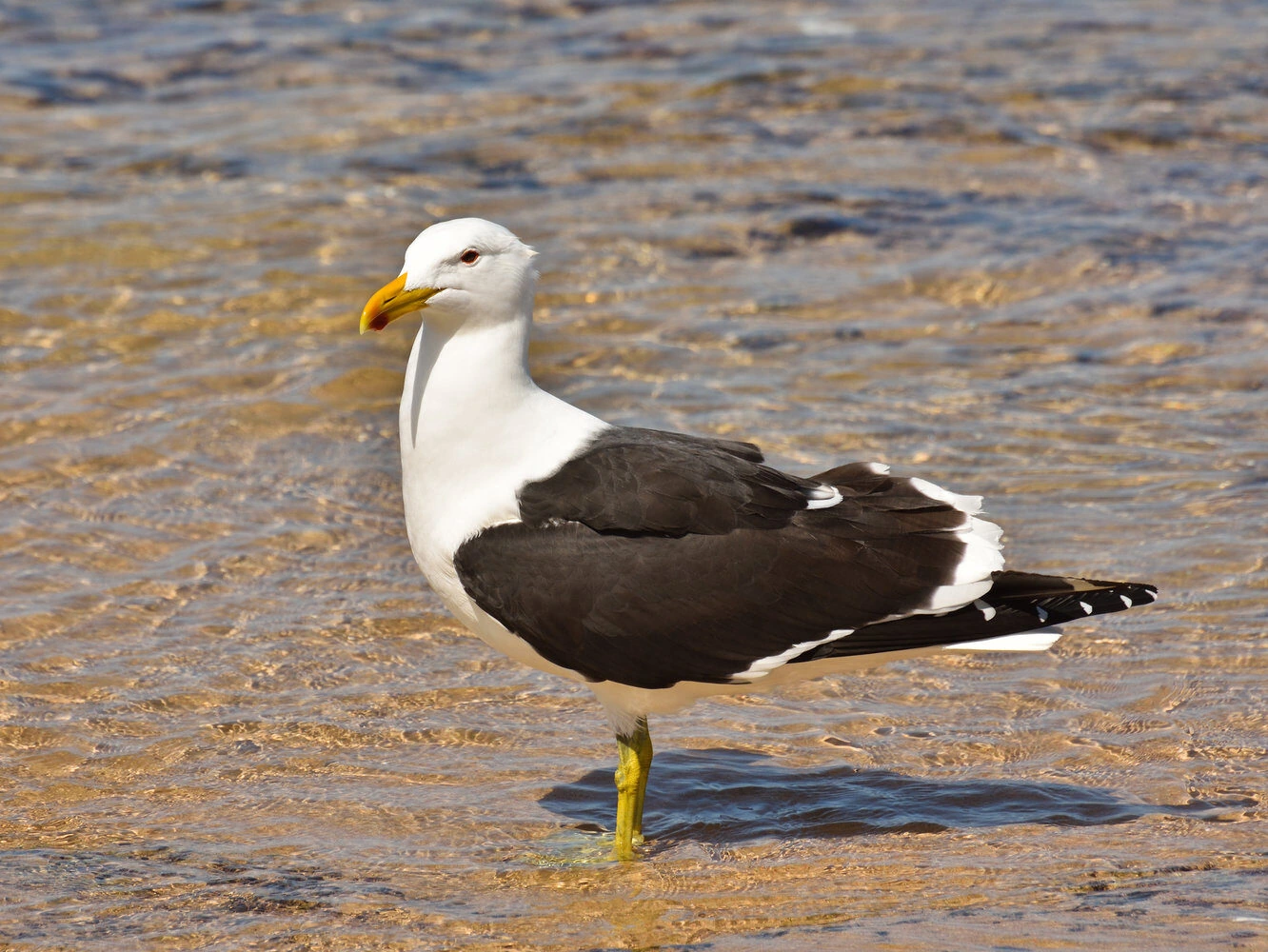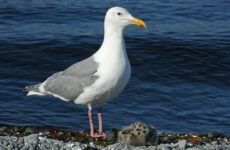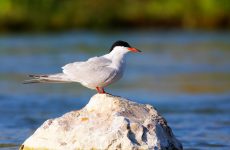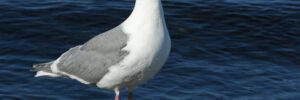


Lesser black-backed Gulls have several subspecies that are very similar to each other. What’s common is that they all have either dark gray or black backs and wings, white heads and underparts, yellow bills with a red spot near the tip, yellow eyes, and yellow legs.
Nonbreeding adults have the same coloration but have a more spotty head and neck.
Juveniles have brown streaking on their heads and necks and brownish, scaled feathers on their backs and wings, and dark bills. Their undertails are barred and they have a dark tail band. Younger birds have pink legs that gradually turn yellow after two to three years.
- Larus fuscus
- Length: 20.5 – 25.2 in (52 – 64 cm)
- Weight: 19.2 – 35.3 oz (545 – 1000 g)
- Wingspan: 53.1 – 5.91 in (135 – 150 cm)
Range
Lesser Black-backed Gulls are mainly found in Europe and Russia but they also spend winter in North America, mainly in eastern states.
Habitat And Diet
You can find Lesser Black-backed Gulls in coastal areas, rocky islands, old lava flows, cliffs, salt marshes, and grassy or sandy islands in lakes and rivers during the breeding season. In winter, they are most likely to be found near rivers, lakes, beaches, fields, and the open ocean.
Some also nest on rooftops in urban areas and hang around garbage dumps and fishing harbors.
Like other gulls, Lesser Black-backed Gulls are omnivores, meaning they eat whatever is available. They eat fish, seaweed, marine insects, worms, and mollusks when they’re near water. They also eat seeds, berries, eggs of other birds, small birds, rodents, and dead animals. Some even scavenge around garbage dumps.
Lesser black-backed Gull Calls:
Nests
Nests of Lesser Black-backed Gulls are usually on the ground but some are on cliff ledges or roofs of urban dwellings and buildings. Males and females construct the nest together using grasses, algae, and debris and are lined with feathers and lichen.
Females lay one to four eggs. Incubation takes around twenty-four to twenty-seven days.
Fun Fact:
Lesser Black-backed Gulls used to be migratory birds but are now being spotted year-round and some even form large colonies.









